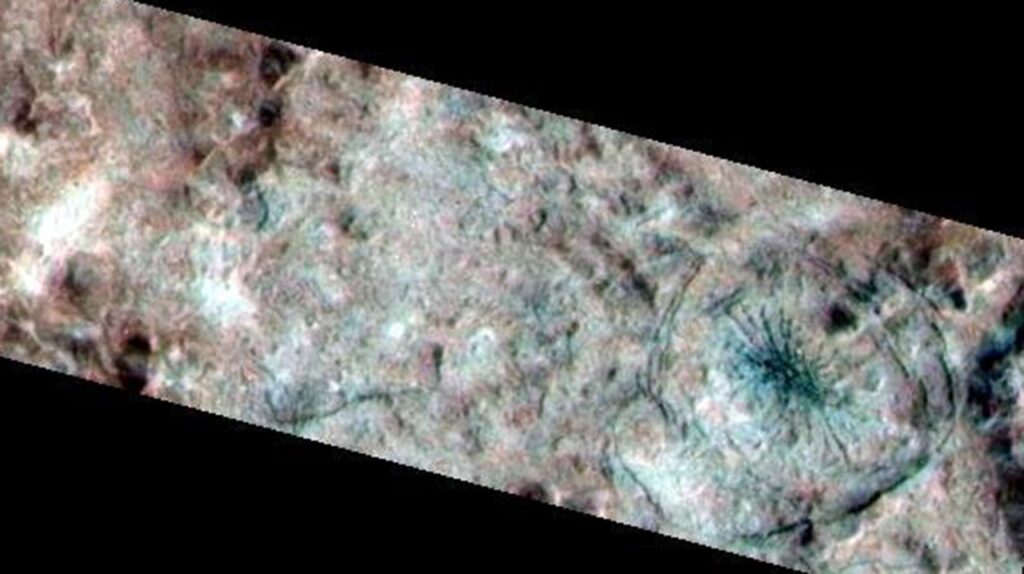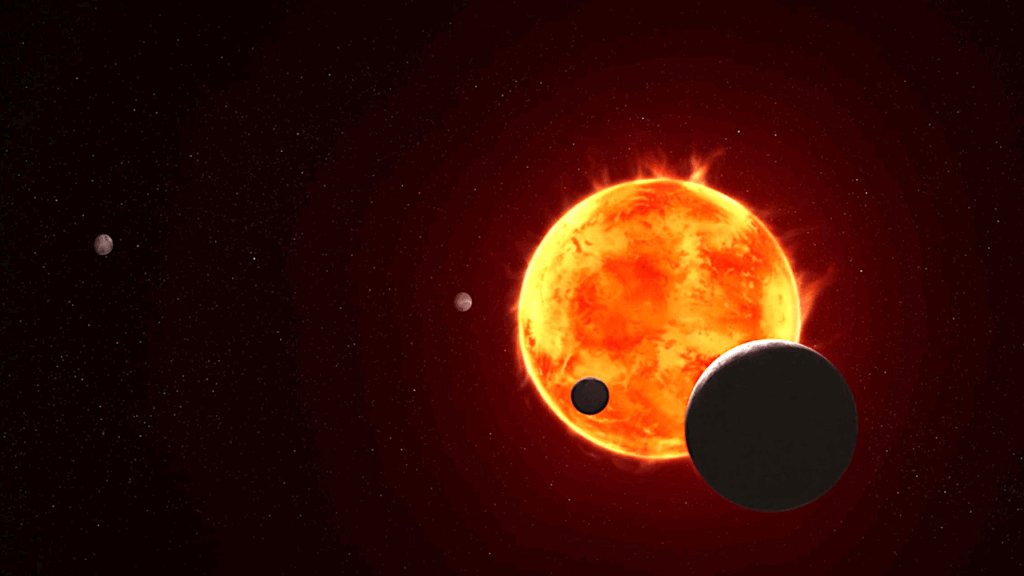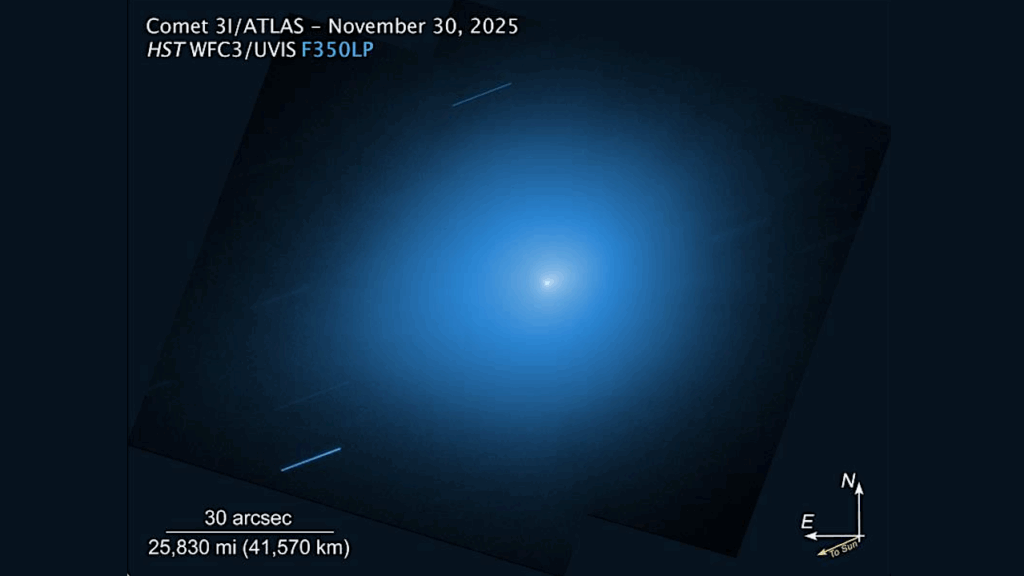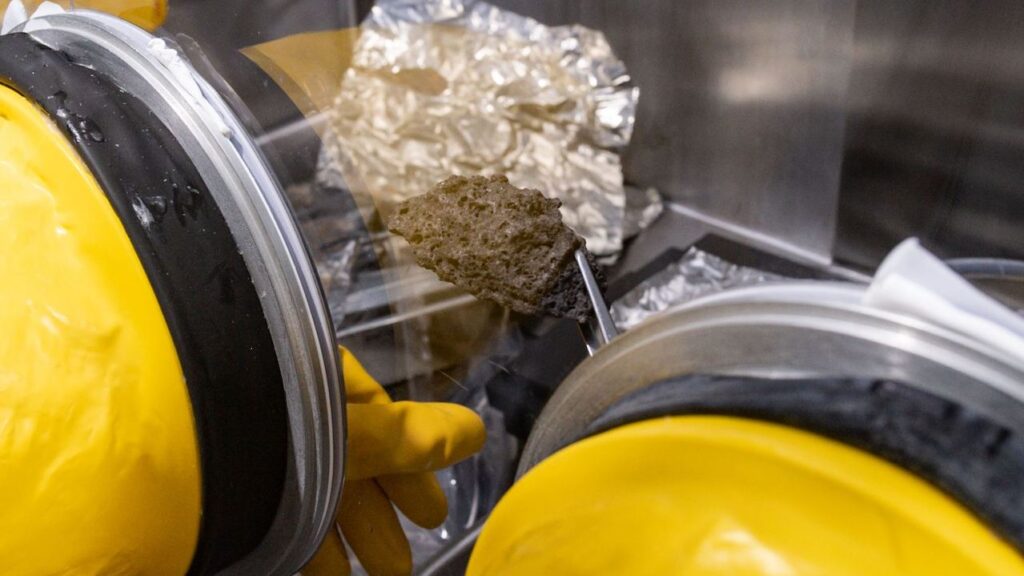Accomplishments of the Curiosity Rover’s Chemistry and Mineralogy CheMin Instrument
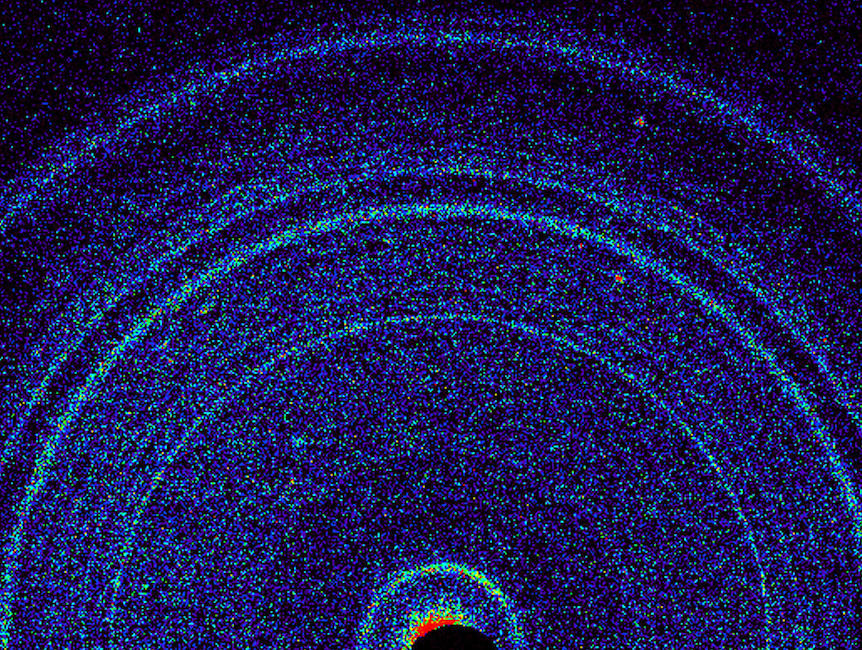
Minerals are like a time capsule; they provide a record of what the environment was like at the time they formed. Different minerals are linked to different kinds of environments. The temperature, pressure, and chemical ingredients that were present – including water – determine what minerals form and how they are altered.
For example, gypsum is a mineral that contains calcium, sulfur, and water. Anhydrite is a mineral that contains calcium and sulfur, but no water. The Chemistry and Mineralogy (CheMin) instrument aboard the Mars Science Laboratory (MSL) Curiosity rover is able to distinguish the two.
Some minerals detectable by CheMin – such as clay minerals, phosphates, carbonates, sulfates and silica – can help preserve biosignatures, or evidence of life. Under some conditions, clay minerals or minerals that form when salty water evaporates can encase and preserve these clues. Scientists use CheMin to search for these and other minerals that preserve evidence of a past Martian environment that might have supported microbial life (though Curiosity can’t determine whether signs of any life are present).
CheMin identifies the minerals in samples of finely powdered rock or soil using a technique called X-ray diffraction. William Henry Bragg and Lawrence Bragg, father and son, formulated the “Bragg equation” to explain the relationships between an incoming X-ray beam and the pattern of outgoing beams created when it interacts with a sample. For example, a powdered crystalline sample will form a pattern of nested cones of light around a central transmitted beam, making them appear as concentric rings. Scientists can use the angular relationships of light and the Bragg equation to figure out the spaces between the atoms in a mineral. These spacings help identify which mineral – or minerals – produced the pattern from a soil or rock sample. X-ray diffraction has been the “gold standard” for mineral identification since its discovery…more than one hundred years ago.
Curiosity’s robotic arm delivers powdered rock or scooped soil to CheMin’s input funnel. Then CheMin – the first X-ray diffraction instrument ever sent to another planet – directs a beam of X-rays as fine as a human hair through the sample, which contains up to 85 mg – as much material as in a baby aspirin. A sample wheel mounted between the X-ray source and detector holds 32 disc-shaped cells, each about the diameter of a shirt button (8 mm) and about the thickness of a business card (0.2 mm). The sample is held loosely between thin plastic windows and shaken to move the sample grains through the beam. Five cells hold samples from Earth to calibrate the instrument. The other 27 cells are for Martian samples and can be filled, analyzed, and emptied several times. An electronic imager called a charge-coupled device, similar to those found in digital cameras, collects the diffracted X-ray beams from the sample. Each sample is analyzed for 10 to 30 hours, spread over multiple nights.
As of December 2022, Curiosity has analyzed 42 samples of soil and rock as it traveled more than 18 miles (29 km) exploring Gale Crater, a large 100 mile (155 km) wide and three miles (5 km) deep crater near the equator. Scientists believe it once contained streams and lakes, as many as four billion years ago, when water flowed on the Martian surface. Sediment deposited in these ancient lakes may hold clues as to whether the environment once was habitable.
The CheMin instrument directly addresses one of the key objectives of the Mars Science Laboratory mission by seeking to identify and characterize past or present habitable environments as recorded in the chemical and mineralogical composition of sediments and rocks.
Accomplishments
Oct. 25, 2012: CheMin performs the first X-ray diffraction experiment on another planet. The first sample analyzed by CheMin is called “Rocknest” and consists of material scooped from a loose sand deposit that formed in the wind shadow of a rocky outcrop. Mars soil is distributed globally by winds, so this single analysis informed and validated the mineralogy of all of the soil analyses accomplished by the Mars Exploration Rovers. CheMin’s results coincided with the 100th anniversary of the discovery of X-ray diffraction.
March 13, 2013: CheMin characterizes the first habitable environment on another planet. When combined with other rover data, this means the MSL project team can declare the mission a success. CheMin analyzed a three and half billion-year-old fine-grained mudstone collected using Curiosity’s drill at a site called Yellowknife Bay. The samples contain clay minerals, sulfate minerals, and other chemical fingerprints that indicate the rocks formed in an ancient freshwater lake that could have provided chemical energy and other favorable conditions for microbes. CheMin wins 2013 NASA Government Invention of the Year Award.
Dec. 27, 2015: CheMin’s analysis of a drill sample called “Windjana” reveals it is rich in a mineral called sanidine. This finding adds to evidence that volcanic rocks around the northern rim of Gale Crater, and likely elsewhere on Mars, hold a geological record of complex igneous processes not observed on Earth until much later in our planet’s history.
May 5, 2016: CheMin finds an unexpected mineral called tridymite. Tridymite is generally associated with explosive volcanism on Earth and was not thought to be important – or even present – on Mars. The discovery leads scientists to rethink the volcanic history of Mars and the conditions and mechanisms in which tridymite may form.
Feb. 6, 2017: Using minerals found in mudstones from Yellowknife Bay and geochemical modeling, scientists calculate the levels of carbon dioxide in Mars’ atmosphere were much lower than predicted by climate models when lakes occupied Gale Crater. This finding implies that carbon dioxide, a potent “greenhouse gas” could not have been responsible for warming the planet three-and-half-billion years ago.
June 2, 2017: The rocky exposures at Pahrump Hills allow Curiosity to examine changes in the mineralogy of sedimentary rocks through geologic time in a single section. CheMin finds a variety of iron oxide minerals. These minerals indicate the ancient lakes that once filled the crater may have had different layers with different amounts of oxygen– a phenomena seen on Earth.
Aug. 1, 2017: The mineralogy of rocks at Pahrump hills indicates they were influenced by acidic fluids not long after burial.
Dec. 1, 2017: CheMin analyses provide new evidence of a long history of water at Gale Crater. The minerals in rocks next to cracks and fractures provide evidence of the passage of different generations of fluids, including acidic waters after Gale sediments were deposited and solidified into rocks. Secondary minerals identified by CheMin and formed by these later fluids were age dated by Curiosity’s Sample Analysis at Mars instrument. These age dates show that water continued to move through the sedimentary rocks at least a billion years after the rocks originally formed.
May 23, 2018: Curiosity resumes drilling more than a year after the drilling mechanism had a problem. This is a huge achievement by project engineers and allows CheMin to resume analyzing the mineralogy of drilled rock powders.
June 6, 2018: Since they were first identified in 2013, clay minerals continue to be major component of almost all of the rocks analyzed by CheMin. Changes in the chemistry of clay minerals correspond with indicators of changing conditions in the ancient lake. This confirms earlier work that the clay minerals formed close to the time of deposition and highlights the importance of interactions of lake sediments and waters with the Martian atmosphere. On Earth, these types of chemical reactions play a key role in balancing greenhouse gases and making nutrients available for microorganisms.
July 24, 2019: CheMin investigates samples from Glen Torridon, which showed strong evidence of clay minerals based on observations from space. These samples are the most clay mineral rich rocks of the mission. CheMin also finds evidence for carbonate minerals for the first time.
June 24, 2020: CheMin investigated the minerals making up four samples collected from Vera Rubin Ridge – an elongated, erosion‐resistant feature on the northwestern slope of Mount Sharp. The results help fill in details of the history of interactions between water and rocks at Gale Crater.
Collaborators:
CheMin is one of 10 science instruments aboard the Mars Science Laboratory Curiosity Rover. Curiosity is managed by NASA’s Jet Propulsion Laboratory in Southern California for NASA’s Science Mission Directorate in Washington. Curiosity and other Mars science missions are a key part of NASA’s Moon to Mars efforts, building on decades of robotic exploration to send humans to the Red Planet in the 2030s.
CheMin’s cross-country team of scientists including researchers at NASA’s Ames Research Center in California’s Silicon Valley, University of Arizona, California Institute of Technology, Planetary Science Institute, Carnegie Institution for Science, Lunar and Planetary Institute, JPL, NASA’s Goddard Space Flight Center in Greenbelt, Maryland, and NASA’s Johnson Space Center in Houston. The team combines expertise in mineralogy, petrology, materials science, astrobiology and soil science, with experience studying terrestrial, lunar and Martian rocks.
Thomas Bristow, at Ames, is the CheMin principal investigator.
The CheMin instrument was invented by David Blake at Ames; Phillipe Sarrazin of the SETI Institute and eXaminArt Inc. in Mountain View, California; Friedemann Freund of the SETI Institute; and Charles Bryson of Apparati Inc. in Hollister, California.
Blake began working decades years ago on a compact X-ray diffraction instrument for use in planetary missions. His work with colleagues resulted in commercial portable instruments for use in geological field work on Earth, as well as the CheMin instrument. The spinoff instruments have found innovative applications in screening for counterfeit pharmaceuticals and analyzing archaeological finds.
Astrobiology


